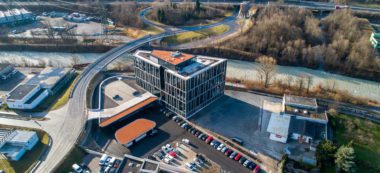Authors: Markus F. Peschl, Thomas Fundneider
Image: Susan Wilkinson
Have you ever wondered why it’s so hard to innovate?
Most activities in our work environments are highly standardized, we have to follow rules and processes, and we have established agreed-upon routines to accomplish certain tasks. These processes create the expectation that if you have certain competencies, there are certain methods that must be applied mechanistically, step by step, to produce successful behaviors. These competencies form the basis of routines that provide stability, predictability, and security at both the individual and organizational levels.
Does innovation follow a similar logic? Obviously, innovation has something to do with novelty, change, and dealing with an uncertain future. As such, we can identify a tension between the aforementioned qualities of stability or predictability, on the one hand, and novelty, which in most cases implies some kind of irritation, transformation, or instability, on the other. And this is why innovation is sometimes so difficult to bring to life.
Innovation is not management
Yet innovation is often treated similarly to other organizational processes. As we saw in our previous blog post, this is not surprising since both humans and organizations have an intrinsic drive to predict the future by using existing knowledge and applying rules that have worked in the past.
We can find an inherent resistance to change and to dealing with uncertainty. This often leads to talk about “innovation management” as if innovation is a process that can be managed or controlled. Innovation strategies such as stage-gate innovation processes are an example of such an attitude, favoring mainly incremental innovation.
Innovation is about enabling
If we are interested in competencies for creating future-oriented and radical innovations in the sense outlined in our previous blog post, this requires a different strategy. As we have seen, it is based on a very different set of premises and attitudes.
Most importantly, if we want to foster open-endedness and receptivity to an unfolding and unpredictable future, we must abandon the notion that deterministic processes lead to such innovations. This has several implications:
- We must adopt an attitude of enabling rather than pretending that we can control everything by following strict rules.
- Such innovation processes require personal involvement and personal transformation (e.g., in your perceptual or thought patterns) and cannot be accomplished by blindly executing a few routines.
- As an innovator, you become “vulnerable” because in such innovation processes, guided by an unfolding environment, it may become necessary to question or even abandon your own creative ideas or existing worldviews.
From learning from the past to futures literacy
While most learning and innovation processes are concerned with past knowledge, adaptation or transmission, futures literacy claims to be an essential capacity to cultivate and educate our anticipatory capacities.
Contrary to what one might expect, the interesting and differentiating point is that this form of literacy does not reduce these capacities to planning or setting and achieving predefined goals. Rather, it goes beyond the assumptions of linear thinking, prediction by probabilities, continuity, and “no change in the conditions of change”. It seeks to respond to what wants to emerge in the future.
Instead of using the past and past knowledge, futures literacy “makes use of the future” and thus becomes a source of new opportunities, possibilities, and innovations for the present. We no longer try to “know” the future, but to explore, prepare, and enable possible futures.
It is about shaping the future by learning how to deal with the open-ended, emergent and disruptive nature of the future; this can be achieved by exploring, co-creating and shaping new spaces for action as well as identifying and cultivating enablers for realizing latent potentials in the present.
In the following sections, we will present more specific competencies that emerge from such a futures literacy framework and a future-driven perspective on innovation.

Deep observation, listening to the world, and understanding of the core
As a first step, we need to relearn how to “see”, observe and deeply understand what is out there, instead of developing “creative” solutions from the outset. We must avoid jumping into problem-solving mode. As we have seen, future-driven innovation is not so much about creativity (in the classic sense) and coming up with “crazy and flashy” out-of-the-box ideas or solutions.
In most cases, the world unfolds in a continuous, quiet, and rather unspectacular way. This implies that we must adopt an attitude of attentiveness and a capacity to acquire deep knowledge through understanding and “knowing from within”. This ability is about deep observation and understanding.
As an example, think about how you innovate a particular service: if you don’t find a solution right away, you typically engage in activities such as user research, ethnographic observation, market analysis, exploration of emerging technologies, etc.
This is fine and important. However, if we are interested in future-oriented radical innovations, this can only be a first step, because it only brings to light the more or less obvious and rather superficial insights.
We are interested in “what is behind” and what is not directly observable. Thus, such a process of deep observation is about feeling and listening to the observed system in an open way in order to understand the deeper meaning and purpose of its underlying dynamics and patterns, its “inner workings and intelligence”.
Generally speaking, it goes beyond merely observing from the outside by penetrating deeper into the core of the phenomenon/object of interest in order to gain a deeper “understanding from the inside” by engaging with it.
This is achieved by changing the perspective from an external “neutral” observer to an internal perspective of becoming involved and an active part of the observed phenomenon. The resulting knowledge is not only about the external and material properties of the observed system (and the ecosystem in which it is embedded), but more importantly about its deeper meaning and core, which allows its future potential to be identified (see next section).
Vigilance for the future: Developing a sense for future potentials and learning from the future
Deep observation and understanding of the core of a phenomenon to be innovated is an important first step, but its focus is primarily on “what is,” on what already exists. Future-oriented innovation goes one step further and – as we have seen in our discussion of futures literacy – seeks to “make use of the future.”
We are not primarily interested in learning about what already exists, but about what is “about to emerge”: the focus is on “learning from the future as it emerges”. This is a form of anticipating future possibilities. It means to be one step ahead, not in the sense of prediction, but to be engaged in the unfolding of the world in a forward-looking way, towards an as yet unknown creation.
This requires highly developed skills and capacities on an individual and organizational level: e.g. raising one’s level of awareness, remaining in silence and openness, developing a sense for details and seemingly unimportant aspects, being able to sense and identify latent or hidden potentials, being able to redirect and reframe one’s patterns of perception and cognition, etc.
These are the key capabilities for generating radical innovations that are not based on projections from the past into the future, but on “cooperating” with the future. It is a matter of picking up and unlocking emerging future potentials in order to use them in a meaningful and prosperous way.
In other words, we must bring these future potentials into the present and begin to create the conditions and environment that will facilitate these emergent processes so that they can become actual.

Mindset of giving up control and undergoing
What is the common thread that connects the innovation competencies discussed in this blog post? It is the underlying attitude that drives most of these competencies: an attitude of relinquishing control and submitting.
As we have seen, future-oriented and radical innovation requires opening up to an unfolding reality, becoming sensitive to what wants to emerge and what is latent out there. This can only be achieved if we suspend our natural predictive activities of our cognition and lower our urge to control our environment.
In other words, it is necessary to face the sometimes uncomfortable challenge of allowing ourselves to be guided by an unfolding reality in which an emerging future purpose draws us into a realm that we do not yet fully know, understand, or appreciate. This is what we mean by undergoing or submitting to the world as a form of co-becoming and being led by an emerging future.
On a more general level, we can see that the understanding of innovation discussed in these blog posts is closely related to the process of life itself. Life is always creative, it is not only about predicting the future, but also about using what the future holds for an organism and shaping the future according to these potentials.
This happens in a process of creative undergoing that is open to what wants to emerge in this intimate relationship of correspondence between the world and us.
Innovation, understood as a future-driven and emergent process, therefore always involves the whole person in his/her creative and innovative capacities to engage with the world, to transform it, and to be transformed by it.
Would you like to stay up-to-date on new approaches to radical innovation that you can apply in your organization? Subscribe to our newsletter below.
Subscribe to Our Newsletter
Keep your innovative edge with more stories like this and additional reading tips, muses, and project updates.


